Expo means jobs
September 13, 2011
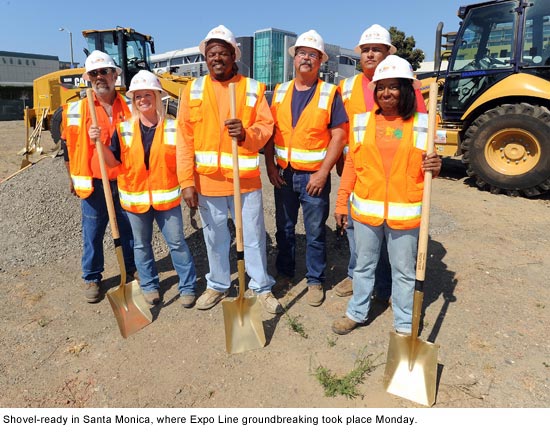
It took more than half a century, but this week marked the beginning of a new era as we broke ground on the first mass transit rail project to hit the Westside of Los Angeles since the Red Cars.
The Expo light rail line, which will run from downtown L.A. to Santa Monica beginning in 2015, offers people traveling to and from this jobs-rich and traffic-choked part of our county a real alternative to sitting and stewing in the gridlock that’s become an unfortunate way of life on the Westside for decades. Tens of thousands of commuters, residents and tourists stand to benefit every day.
To get a sense of the full sweep of what the 15.2-mile Expo Line will deliver, check out this map of the route. In the coming months, trains will start running in the line’s first segment, and construction will begin on Expo Phase 2, which will go from Culver City to 4th Street and Colorado Avenue in Santa Monica.
When completed, we expect the Expo Line to be one of the busiest light rail lines in the country. And its downtown connections to Metro’s existing and future lines promise to magnify its significance across the region.
The good news doesn’t stop there; all of us will be breathing easier as a result of the car trips that this new light rail light line will help eliminate.
But the most immediate upside is this: Expo Phase 2, largely funded by the Measure R ½-cent sales tax overwhelmingly approved by county voters for transportation improvements, can start putting people back to work again.
New jobs, more than 9,000 of them, are being created. And those jobs have coattails, creating ancillary jobs and paychecks that in turn pump new life into struggling local businesses and services.
As job creation rightly assumes new urgency as Topic No. 1 in the national political dialogue, we’ve got news for our leaders in Washington and Sacramento: The solution to fixing our national economy can start right here in Los Angeles County.
The American Jobs Act, released by President Obama this week, includes nearly $3.4 billion for California transit and modernization projects, which the White House says could translate to at least 51,500 jobs here. But we can do more.
We have the projects—not just Expo Phase 2, on which we broke ground Monday, but the much-needed Westside Subway extension and others—that together can put 166,000 people back to work. Los Angeles Mayor Antonio Villaraigosa’s plan to tap future Measure R funds to jumpstart these local transit projects offers a clear way to get our economy moving in the right direction.
And that’s a train that officials at every level of government need to jump aboard now.
Posted 9/13/11
New jail phone plan may be a win-win
September 8, 2011
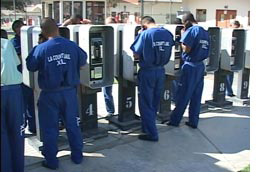 Families of Los Angeles County inmates who’ve been forced to pay unusually high rates for collect calls from jail telephones could soon find relief under a proposed new contract that also would generate more county revenue.
Families of Los Angeles County inmates who’ve been forced to pay unusually high rates for collect calls from jail telephones could soon find relief under a proposed new contract that also would generate more county revenue.
A proposed change of vendors, outlined in a letter to the Board of Supervisors from Sheriff Lee Baca and Chief Probation Officer Donald Blevins, would cut rates for an average phone call from the county lockup by about 30% while adding millions in guaranteed annual funding for key inmate programs and jail maintenance.
Tentatively scheduled for consideration by the board on September 20, the recommendation to hire Public Communications Services, Inc., is the result of a competitive bidding process urged by critics, including Supervisor Zev Yaroslavsky, who complained that families were paying too much for jail phone calls and that the county was receiving too little in the existing contract’s revenue sharing provisions.
“My argument from Day One has been that if the rates were less burdensome on inmates families who were being overcharged, then more calls would be made and more money would be generated for the Sheriff’s Department,” Yaroslavsky said. “Now we have a proposal in place that hopefully will achieve those objectives.”
The price of phone calls from county jails has been controversial. Studies show that maintaining close contact with families via phone, correspondence and visits, can reduce recidivism among inmates and improve their chances of a successful reentry into society.
High phone rates deter that crucial communication. But they can also indirectly benefit inmates because, by law, the county’s portion of revenues from jail phones must go into special Inmate Welfare Funds that underwrite educational, recreational and other projects that are geared to them.
Debate over the rates charged to Los Angeles County jail phone users dates back several years to early preparations for the renewal of the current contract, which is held by Global Tel*Link Corp., a private, Alabama-based company that provides jail and prison phone systems nationally.
GTL had offered a $3.5 million fee to the county in exchange for a contract extension. The sheriff, meanwhile, argued against opening the contract to competitive bidding, saying that it might damage the department’s revenue stream.
But the supervisors and County CEO William T Fujioka insisted that putting the contract out to bid would be the best way to lower prices and maintain funding.
“I’m absolutely convinced, you put this out on the street, we’re going to get a more competitive contract,” Fujioka told Supervisors in 2008. Ultimately, in the fall of 2009, a competitive process was undertaken, leading to the new proposal.
The push for more competitive rates comes amid a shrinking competitive landscape. In fact, the winning bidder, PCS, was acquired by GTL three months after the bidding closed. GTL is among the larger firms in the prison telecommunications sector; PCS, whose customers include the Michigan Department of Corrections, was its Los Angeles-based rival.
Earlier in 2010, GTL acquired another competitor, Digital Solutions Inc., and has announced plans to acquire at least two more this year, Conversant Technologies Inc. and Value-Added Communications.
Unlike phone contracts that govern the rates of residential users, jail phone pacts have had little regulation, allowing a handful of specialized service providers to charge whatever the market will bear.
Such high prices allow carriers to offer counties lucrative revenue sharing arrangements on contracts that, in Los Angeles County’s case, have typically amounted to millions of dollars a year.
But the situation has had its downsides. Families of inmates—many of whom are among the poorest people in the county—have borne some of the highest phone rates in California at a time when the price of phone service in even far-flung places has been slashed by technology.
Under the county’s current contract, GTL charges families of Los Angeles County jail inmates $3.54 for the first minute of a collect call—more than almost every other county jail in Southern California and about seven times the price of a 50-cent pay phone call. The Sheriff’s Department gets 52% of the revenue generated by the roughly 5,400 phones in the county’s jail system—a split that last year generated about $10 million for the county’s Inmate Welfare Fund.
In contrast, the 5-year PCS plan would cut the first-minute rate to $1.25, with a 15-cent-per-minute charge thereafter. The cost for an average 17-minute inmate phone call would fall from about $5.20 to around $3.65. The new contract also would increase the county’s share of revenue to 67.5 percent, with a guaranteed minimum of $15 million annually for the Inmate Welfare Fund and $59,000 for the county’s Probation Department.
Lt. Ronald E. Gilbert of the Sheriff’s Inmate Services Bureau said PCS was one of four bidders whose names will become a matter of public record after the supervisors’ upcoming vote.
Gilbert said PCS submitted its proposal before bidding was closed in August, 2010, three months before its acquisition by GTL. The terms of PCS’ bid would be binding, despite the change in ownership, Gilbert said, adding: “They’re still their own entity. As far as the contract is concerned, we’re dealing with them as PCS.”
Gilbert said the proposal’s guaranteed revenue is especially welcome in a time of constricted state funding. In recent years, Gilbert said, the county’s share of money has dropped as steep budget cuts have prompted the release of thousands of inmates from overcrowded jails while the tough economy has forced families to limit phone time with those who remain incarcerated. Gilbert predicted that the lower prices would likely increase inmate calls, which during the first six months of this year numbered 2.4 million.
“It generates a more stable income stream for the Inmate Welfare Fund, and it benefits the inmate and family population,” he said. “Everybody seems to win on this deal.”
Posted 9/8/11
United we stood
September 8, 2011
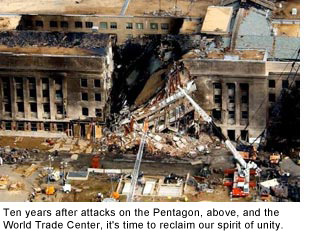 We all remember where we were. In my case, it was Washington, D.C., where, just back from a morning jog to the Arlington Memorial Bridge, I watched on my hotel room television as those first unbelievable images of the World Trade Center started pouring in. Shortly after, Washington itself turned into a cacophony of screaming sirens and confusion, the White House ringed with concentric circles of machine-gun-toting Army and Secret Service officers, the National Mall a veritable military encampment.
We all remember where we were. In my case, it was Washington, D.C., where, just back from a morning jog to the Arlington Memorial Bridge, I watched on my hotel room television as those first unbelievable images of the World Trade Center started pouring in. Shortly after, Washington itself turned into a cacophony of screaming sirens and confusion, the White House ringed with concentric circles of machine-gun-toting Army and Secret Service officers, the National Mall a veritable military encampment.
In the days to come, business as usual ground to a halt, of course. My scheduled meetings were cancelled (except for one with the Secretary of Veterans Affairs, from whose office we both gazed out at a still-smoking Pentagon.)
It was four days later that I was finally able to catch a plane back to Los Angeles, where one of the most moving sights I encountered as I drove toward home was a banner and flag store on Vine Street in Hollywood, where a line of people stretched around the block to buy American flags.
For me, back from our nation’s capital in its moment of crisis, that line of my flag-buying fellow Angelenos brought it all home viscerally—that we were all standing as one, regardless of where we happened to live.
There are no silver linings in the aftermath of attacks as dastardly as those that claimed nearly 3,000 lives in New York, Washington and Pennsylvania on September 11, 2001.
But there are indelible memories of an extraordinary test of our national character in which we showed the world—and each other—exactly what we were made of.
I don’t think there’s ever been a time in my memory when people came together in common cause and unity as they did then. Party didn’t matter, ethnicity didn’t matter, religion didn’t matter—we were all united as I’ve never seen us before. We were all Americans.
It’s something I’ve never forgotten.
This 10th anniversary of the September 11 attacks is a watershed mark in our history. I find myself talking these days to young people—those too young to remember what happened well, or at all—and I feel a responsibility to convey to them, as the Pearl Harbor generation conveyed to me, what it meant to live through those momentous days.
As Elie Wiesel has so often said, memory is a very powerful thing. We remember 9/11 so that these lives will not be lost in vain, and to recommit ourselves to never experiencing anything like this ever again.
This is not a once-a-year or a once-a-decade commitment. These events are always with us. And I suspect that like me, you feel a surge of gratitude and remembrance every time a fire truck passes by, flying the American flag or proudly emblazoned in memory of fallen FDNY colleagues. What we feel is a day-in, day-out recognition of these first responders’ bravery and service under pressure—an outward manifestation of the best we as a society have to offer.
This 10th anniversary gives us a chance to acknowledge that debt of gratitude, remember those whose lives were lost and recapture the spirit of unity that permeated our nation for all too short a time.
Posted 9/8/11
Strut your mutt and benefit the blind
September 8, 2011
Pooches and owners alike get a bit of exercise while supporting a great cause at California Council for the Blind’s inaugural Mutt Strut.
The run and walk, which takes place in Los Angeles State Historic Park, offers 2k and 5k courses through a landscape of native Southern California vegetation. Pets or service dogs, and sighted or blind owners are all invited to participate (no dog required.) Volunteers will be on hand to coach, provide medical aid if necessary and staff hydration stations. After the race, participants can pick up a “wag bag,” enter a raffle drawing, and meet some of the organizations that support the vision-impaired.
Individual or team registration is required for the Saturday, September 10 event, which costs $25 for adults and $20 for kids under 16. The 2k begins at 9 a.m. and the 5k is at 9:30 a.m. Parking will be “first come, first served,” but organizers encourage runners to take Metro—the park is just 5 minutes away from the Chinatown station of the Gold Line, at 1245 North Spring Street. Only service dogs are allowed on buses and trains.
Posted 9/8/11
A whole world of folk
September 8, 2011
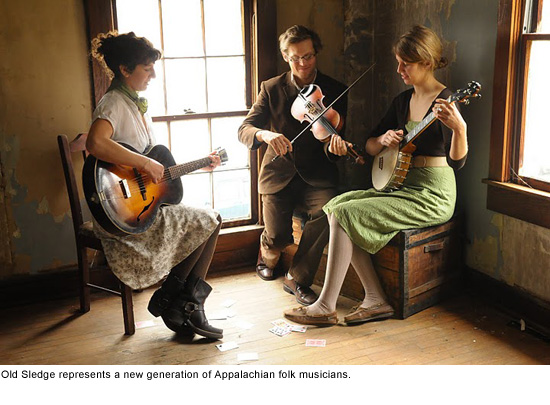
Riverdance your way over to the Equinox Festival this weekend, and treat your ears to topnotch folk sounds from across the globe.
The music starts with a heap of Irish folk music. Mick Maloney couldn’t have asked for a better name, and he brings a wealth of experience to the stage, having produced, picked and strummed on more than 40 albums. The Mulcahy Family brought lutes and flutes straight from Limerick, and “A Gaelic Gathering” will encourage the audience to join in as they fiddle and stomp their rhythmic jigs.
Other acts include Italian folk from Musicantica, Zimbabwean dance with Masanga Marimba Ensemble, and Son Jarocho stylings from Cesar Castro and Cambalache. Of course, the United States has its own rich folk tradition, and will be represented by Old Sledge and Ginny Hawker from Appalachia, bluesy Brother Yusef, fiddlers Dan Gellert and Lissa Schneckenburger, and others. A full schedule of acts is available on the event’s website.
There will also be plenty of food, crafts, storytelling, workshops and impromptu jam sessions (bring your own dulcimer.) And, of course, there will be dancing–lots of it. This is a “teaching festival,” so learn from the pros how to square dance, buck dance and jig.
The Equinox Festival is presented by the California Traditional Music Society and co-sponsored by the Los Angeles County Arts Commission and the National Endowment for the Arts. It takes place Saturday and Sunday from 10 a.m. to 5:30 p.m. at Rancho Cordillera del Norte in Northridge. Evening concerts follow the festival in Pasadena and Lincoln Heights. Get directions and other info on the website.
Posted 9/8/11
A surf story for the ages—all ages
September 8, 2011
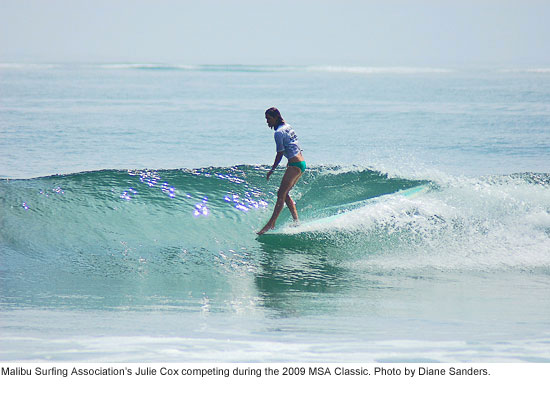 Just imagine the sand that’d be flying these days if a band of wild, salty teenagers turned a 9-bedroom mansion in the exclusive Malibu Colony into their flophouse, lazily draping themselves across a couch they’d hauled out front or dropping a new engine into their Woodie for the whole neighborhood to see and hear.
Just imagine the sand that’d be flying these days if a band of wild, salty teenagers turned a 9-bedroom mansion in the exclusive Malibu Colony into their flophouse, lazily draping themselves across a couch they’d hauled out front or dropping a new engine into their Woodie for the whole neighborhood to see and hear.
Back then, they were too young to know—or to even give a hoot—that they were creating a culture that would come to define Southern California in the ‘60s and beyond. These were the real beach boys and girls, mastering one of the world’s best surf breaks during the sport’s breakout years. They were the young, the proud, the hard-partying members of the Malibu Surfing Association.
This weekend, the association will once again be hosting its annual MSA Classic, bringing together the best surf clubs in the world to compete at Malibu’s legendary “First Point” at Surfrider Beach. But this time, expect a few more graybeards in the lineup and on the shoreline.
This year’s contest commemorates the 50th anniversary of the Malibu Surfing Association, a multi-generational stretch that has seen the sport explode into a multibillion dollar industry. In addition to hosting contests, the MSA prides itself on its active involvement with a variety of environmental issues impacting the water and beach of Surfrider. According to MSA President Michael Blum, the group’s invitation-only membership ranges in age from 8 (“he’s still on the learning end of surfing”) to 80 (he sometimes has some trouble getting his waves”).
“What it all comes down to,” Blum says of the club’s mission “is that we have Malibu in our name, and that beach means a tremendous amount to us.”
Among the many current and former members who’ll be on hand this weekend is Butch Linden, one of the MSA’s eight founders and its first president. It was Linden’s home in the Colony where young surfers from here and abroad would drop by, sometimes staying for months.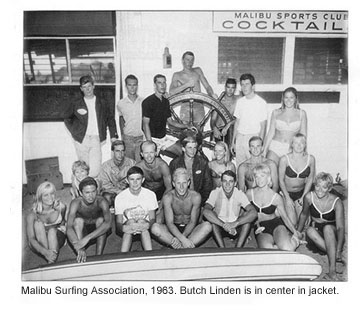
“My mom loved kids,” says Linden, now 68 and still surfing. “They were going to get breakfast, lunch, dinner, whatever.”
Linden, one of the first to tackle the treacherous Pipeline on Oahu’s North Shore, says that when the group was formed in November, 1961, surf clubs from San Diego to Santa Cruz were competing against each other. Linden and his highly skilled pals figured they could take on all comers. “We were the extreme kids,” he says.
Two years after its founding, the MSA held its first invitational at Surfrider, where the land was still owned by the Rindge-Adamson family, owner of Adohr Farms, one of the country’s largest dairies. Concerned about liability and looking for a way to dissuade the young surfers, the family said the boys would first have to obtain a $1 million insurance policy from Lloyds of London. With the help of an adult sponsor, Linden says, “we pulled it off.”
Before long, dozens of kids were flocking to the club’s weekly gatherings at the Malibu Inn. “We met every single Tuesday for eight years,” says Linden. (Now it’s once a month.) The membership included teenagers from a few famous neighborhood families, including the Hilton brothers. “We had so much fun. We had parties all the time. It was really something.”
Surf clubs, of course, aren’t for everyone. The sport is highly individualistic, with most of the accomplished surfers—and even those who are not so accomplished—always working to position themselves for the maximum number of waves during a session. That’s particularly true at Surfrider.
“You have to be ready for it. You have to have your mindset ready to battle the crowds out there,” says MSA member Julie Cox, who prefers the mellower scene at Leo Carrillo, north of Surfrider.
Cox says she grew up in team sports, playing high school basketball in Agoura Hills. So joining the MSA in 1996 at the age of 16 to surf competitively seemed a natural fit.
“It helped push my surfing level forward,” says Cox, 31, operations manager of the California Surf Museum in Oceanside. “And you get really stoked if another Malibu girl makes it through her heat. You get to root for your friends.”
This weekend, Cox will be competing in both shortboard and longboard events. But it’s the bigger board, with its smooth glide and lineage to the past, that she and the MSA favor. “It suits my personality,” says the graceful surfer. “A little more laid back.”
Cox says she wouldn’t miss the contest.
“I know how hard the club has worked on this. You can’t go wrong with September at the beach in Malibu. The waves are beautiful, the water temperature is warm and most of the crowds have gone home. It’ll be a great reunion.”
Surfer Gary Sellern says he’ll be in the water, too—shoulder be damned. It’s bone-on-bone, he says, the result of “surfing insanely for 50 years.” Sellern, now 77 and a former MSA president, says his physical problems have kept him largely dry-docked for more than a year. “My wife is almost kicking me out of the house,” he says. “The club and surfing, that’s been my life for half a century.”
This weekend, however, Sellern is lugging a huge 11-foot board that will take less paddling strength to build speed in the water, hopefully allowing him to catch more waves. But even during these frustrating months out of the surf, he says, the camaraderie and support of the MSA has helped him flow with his advancing years.
Without it, he says, “I’d go crazy.”
Posted 9/8/11
A day to honor and look back
September 8, 2011
Los Angeles County is thousands of miles from the devastation of 9/11, but the terrorist attacks continue to reverberate strongly here and across the nation.
This Sunday, Sept. 11, 2011, Los Angeles marks the 10th anniversary of the tragedy with events honoring victims and their families and the bravery of emergency responders who risked and sacrificed in the rescue and recovery efforts. Here are a few of the events taking place in the Third District and beyond.
As part of a day of observances beginning at 8:30 a.m., Pepperdine University will fly 2,976 flags on its lawn in Malibu–one for each person who perished. The victims’ names will be recited at a ceremony where some of their family members and local leaders, including Supervisor Zev Yaroslavsky, will offer personal reflections. The film “United 93,” depicting the flight that went down in rural Pennsylvania, will be shown in an auditorium later in the day.
Beverly Hills will mark the anniversary by dedicating a 9/11 Memorial Garden that features replicas of the Twin Towers and an 1,800 pound piece of steel from the original buildings, set on a pedestal.
Sherman Oaks’ existing memorial, made from the towers’ steel and limestone from the Pentagon, sits in front of Los Angeles Fire Department Station 88. At 7 p.m., officials and family of 9/11 victims will speak. All are welcome.
A 9 a.m. remembrance ceremony in honor of those who died will be held at the Frank Hotchkin Memorial Training Center, 1700 Stadium Way, Los Angeles, featuring an array of city, county and federal officials.
At noon on the South Lawn of Los Angeles City Hall, some of those same dignitaries, including Mayor Antonio Villaraigosa, Police Chief Charlie Beck, Interim Fire Chief Brian Cummings and public safety representatives from all levels of government will take part in a ceremony honoring 9/11 victims and their families, first responders who traveled from L.A. to Ground Zero, and LAPD officers who lost their lives fighting in Afghanistan.
A few blocks down Temple Street at the Cathedral of Our Lady of Angels, the 120-member Angeles Chorale will perform a free musical tribute to 9/11 victims at 4:30 p.m.
Other events Sunday include the “Tunnel to Towers Run” at the L.A. County Fair, honoring military and first responders and their families.
Posted 9/8/11
Reflections from 9/11’s front lines
September 8, 2011
In the nightmarish days after the attacks of September 11, 2001, with fears running high of another strike on the way, L.A. County Fire Department’s elite urban search and rescue team remained in place—first in line to respond here if the West Coast was next.
But some of its members, called up by FEMA and working on their own time, traveled east to lend a hand at the World Trade Center and Pentagon sites. In the 10 years since, their experiences in those dark days and nights have stayed with them and, in some ways, shape their world view today.
Captain Dave Norman, chosen to help oversee night rescue operations at the World Trade Center site, traveled to New York three days after the attacks. “It was complete chaos: thousands of people, bucket brigades, crane operations going on, a mass of humanity throughout this 16-acre collapse site,” he recalled.
His first night on the job—one of 18 he spent at the site—Norman saw one of the rescuers emerging from the rubble with a New York fire department helmet in his hand.
“Coming out of the void, all he had in his hand was that helmet with a No. 1 on it. A very powerful moment, if you will.”
Norman, who works on one of the county’s two Urban Search and Rescue teams,Task Force 103 based in Pico Rivera, said it is hard to convey the full force of what went on in New York. “You really can’t explain it,” he said.
But he knows his 9/11 experiences, along with his wife’s recent bout with cancer, have changed how he looks at things.
“It’s a reminder of how lucky we are to be alive, contributing and having a purpose, not only in your professional life but in your personal life and your relationships. Are you contributing enough? Being the best person you can be? These were just ordinary people, heading to work. Just like that, the world changed.”
One of Norman’s colleagues, Battalion Chief Larry Collins, also got the call to head east after the attacks. He recently reflected on it all in an article he wrote for the firefighter publication “Straight Streams.”
“Those of us who responded from the West Coast saw first-hand what a catastrophic terrorist attack looks like, and we’re forever reminded that it can happen again anywhere in our nation,” he wrote.
For Collins, the losses that day were as much personal as professional: Ray Downey, the New York fire department deputy chief with whom he’d long taught rescue operations classes, was among the hundreds of FDNY firefighters killed that day in the towers.
Had New York been spared, Downey almost certainly would have reported to the Pentagon, helping to lead the search and rescue response there. As it was, that role fell to a national cadre of experts, including Collins, who remembers saying goodbye to his New York colleague in July, 2001, after a class they’d taught in Baltimore, with their profession’s trademark sign-off, “See you on the big one.”
They jokingly agreed that was likelier to be in L.A. than New York. “It turned out both of us were wrong,” Collins wrote, “because three months later L.A. County and L.A. City firefighters were in New York digging for survivors in the wreckage of the World Trade Center.”
Collins, whose recent deployments include the earthquake and tsunami in Japan and Hurricane Irene on the East Coast, was a captain when he headed to the Pentagon shortly after the attacks, helping to supervise night operations at the site. Since promoted to battalion chief, he now oversees stations in the unincorporated areas of Florence-Firestone, Willowbrook, and the cities of Huntington Park, Lynwood, South Gate, and Cudahy, while also serving as a task force leader of the department’s urban search and rescue team.
The expertise garnered after 9/11 in Washington, D.C. and New York, and at disaster hot spots around the world, has made L.A. County a safer place—even though most folks on the street might not be aware of it, he said.
“Those people on the fire truck are often some of the most experienced rescuers in the world,” he said. When catastrophe strikes, “you want people who have seen maybe even bigger things than that, and have done it over and over again.”
And, as Collins prepared to head to New York for 9/11 observances this weekend, he made it clear that the search and rescue wisdom of Ray Downey and his New York team didn’t die with them in the towers that day. He said those FDNY colleagues were instrumental in helping L.A. County build its own urban search and rescue team—a legacy of shared knowledge, and of pulling together in a crisis, that continues to this day.
“They helped us immensely,” Collins said, “and that’s the power of sharing that goes on.”
Posted 9/8/11
Three maps, many voices
September 7, 2011
Officially, three maps—two of which would radically reshape L.A. County’s political landscape—were at the heart of the Board of Supervisors’ public hearing on redistricting Tuesday.
But the day really belonged to the people, hundreds of them, who came to the Hall of Administration from all corners of the county to take a personal stand on what has become a highly political redistricting fight.
They packed the 690-seat board hearing room and at least 200 more crowded into two overflow rooms during the lively but generally good-tempered meeting. In all, 207 speakers, each allotted a minute to make their point, ended up addressing the Board of Supervisors during the marathon session. Their comments offered a dispatch from the front lines of governance, touching on everything from literally street-level services like traffic-slowing rumble strips on canyon roads to the very nature of representative democracy itself.
And many speakers, from many parts of the county, seemed to feel the same way as Malibu City Councilmember Lou La Monte, who told the board: “We ain’t broken. Please don’t fix us.”
“Anyone who lives here knows that the North Bay and South Bay have different interests,” La Monte said. “Maintaining as closely as possible the existing 3rd District lines would continue the success we have achieved working with our natural neighbors…Our present 3rd District works very well the way it is.”
The public hearing represented an important moment in the county’s once-a-decade redistricting process, in which the five supervisorial districts are rebalanced to reflect population changes measured by the U.S. Census. On Tuesday, many speakers favored map A3, which makes only modest changes to the current district boundaries, and opposed maps S2 and T1, which would dramatically redraw the lines and reassign more than 3 million residents in an effort to create a second supervisorial district in which Latinos make up a majority of the citizen voting age population. Both S2, submitted by Supervisor Mark Ridley-Thomas, and T1, proposed by Supervisor Gloria Molina, would divvy up the San Fernando Valley among three supervisors, instead of the two who share it now.
“While I’m proud of my culture and my heritage, I am torn between two lovers today,” said Sylmar resident and community activist William “Blinky” Rodriguez, who said he’d decided to side with his current supervisor, Zev Yaroslavsky, in the redistricting showdown. He credited Yaroslavsky and his staff with years of commitment to the northeast San Fernando Valley, with its large Latino population, and said: “I’m here to support not breaking up the San Fernando Valley, not breaking up the 3rd District.”
Yaroslavsky, who is in his final term as a county supervisor and thus not personally affected by the proposals, has strongly objected to the S2 and T1 plans as needlessly disruptive and damaging to communities throughout the county. (Read his blog here.)
Some 3rd District residents said they fear that the sweeping redistricting proposals would sweep away years of environmental progress.
“I haven’t heard enough here today about the Santa Monica Mountains National Recreation Area,” said one speaker, Bruce Benson. “It’s the largest urban national park in America. T1 and S2 will slice and dice this national treasure. Without A3, the wealthiest and most influential among us will move in to develop the mountains. Without A3, the bulldozers are on their way.”
Supervisor Don Knabe, who is up for re-election next year in a district that would be profoundly transformed under either the S2 or T1 plan, came in for vocal praise from many of his constituents, who turned out to support his A3 plan and advocate for keeping the 4th District largely intact.
“He is our hero,” said one speaker, Robert Thome of Whittier, a patient at Rancho Los Amigos Hospital in Downey.
Some who showed up to support Knabe’s A3 plan wore black T-shirts from the Energy Pathway Program at the South Bay Center for Counseling. Others, from communities linked by the Santa Monica Mountains, wore green ribbons. Both factions stood and waved together when their favored plan was mentioned.
On the other side of the issue, supporters raised signs reading “Follow the numbers…Follow the law!” when speakers advocated the S2 and T1 plans. Some also praised Molina as a trailblazer whose presence on the board grew out of a redistricting battle two decades ago.
“Twenty years ago, it took a court case to create the district that we now have [represented by Supervisor] Gloria Molina,” said Andre Quintero, mayor of El Monte. “This is one of those last legacy issues where you can create a district that not only gives Latinos an opportunity for another position here on the Board of Supervisors, but will create a huge impact for the county.”
“I urge you not to turn back the clock. Support two Latino districts,” added Jesus Andrade, of the National Council of La Raza.
Latinos make up 48% of the county’s overall population, and about one-third of its citizen voting age population. The federal Voting Rights Act requires equal opportunity for minority groups. However, courts have ruled that “50% districts”—those in which one minority group makes up more than 50% of the voting age citizenry—are required only when voting is so racially polarized that non-minorities vote against minority-preferred candidates so consistently that those candidates are denied an opportunity to win.
One speaker, George Brown, a Gibson Dunn attorney who served as voting counsel to the statewide Citizens’ Redistricting Commission, told the board that studies have found evidence of “racially polarized voting” among Latino and non-Latino voters in Los Angeles County.
But others argued that county voters have demonstrated they will vote for Latino and other minority candidates without the need for such dramatic boundary changes.
“To say that we need more Latino elected officials in our area is ridiculous,” said Alina Mendizabal, a community activist in Sylmar.
“Please. You don’t know our neighborhood. If you knew the San Fernando Valley, you’d know we already have tons of [Latino] elected officials.”
“We already have equality in our county,” added Mario Guerra, a city council member in Downey. “I’m insulted that anyone would suggest that in our particular city that we vote by the color of the skin or somebody’s surname…Let’s not move 3 million people around. Representation, not race.”
Other speakers expressed concerns that the Asian-Pacific Islander community would lose out under S2 and T1. “As we all know, L.A. County is one of the most culturally diverse places in the world, and the current 4th District boundary is well-balanced with diverse people from the white, Latino, African America, Asian American and other minority groups,” said Kimthai Kuoch of the Cambodian Association of America. ”Under plan S2 and T1, millions of people will be shifting and it will dilute our voting voice to almost nonexistent.”
Beyond questions of race and representation, the afternoon-into-evening session also offered a vivid look at how geography can be destiny—for better or worse.
People from communities in and around the Santa Monica Mountains, for example, worried that proposed boundary changes could have a negative effect on everything from land use to water quality to emergency preparedness.
And some feared the loss of long-running alliances.
“The city of Santa Monica currently has a number of regional issues, including homelessness, the environment, transportation, all of which are being addressed on a regional basis through our long-standing ability to work with our neighbors,” said Gleam Davis, mayor pro tem of Santa Monica, who said she was speaking as an individual citizen. “If our neighbors become very distant, such as in Long Beach, it will be much more difficult to find that community of interest and more difficult for us to meet the needs of our own constituents.”
Davis, a former trial attorney in the Justice Department’s Civil Rights division, said she believes the board “can meet both the letter and spirit of the Civil Rights Act and the Voting Rights Act by still maintaining the communities of interest that have been developed over the past few decades. It would be a shame to unravel the very important and powerful relationships that we have formed over the past decades by changing so many people and moving them around.”
The Board of Supervisors will hear a final round of public comments on the redistricting proposals on Sept. 27 and are expected to take a vote that day. If supervisors can’t pass one of the plans with a 4-1 margin, a special redistricting commission made up of District Attorney Steve Cooley, Sheriff Lee Baca and Assessor John Noguez will choose a plan.
Posted 9/7/11




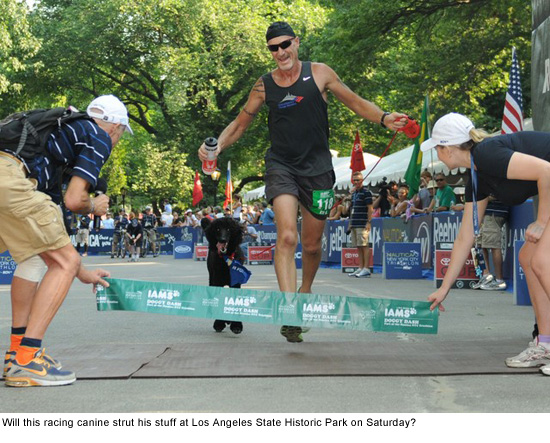

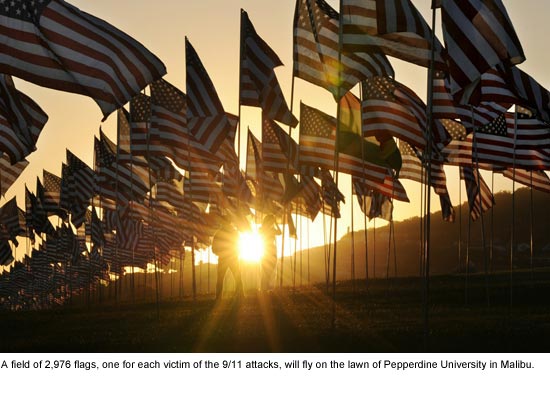
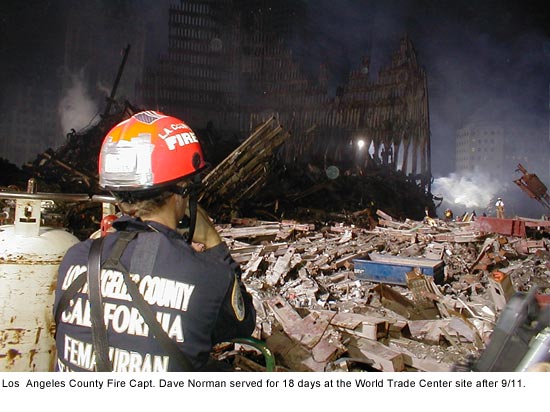






 Check for the latest closure information
Check for the latest closure information








